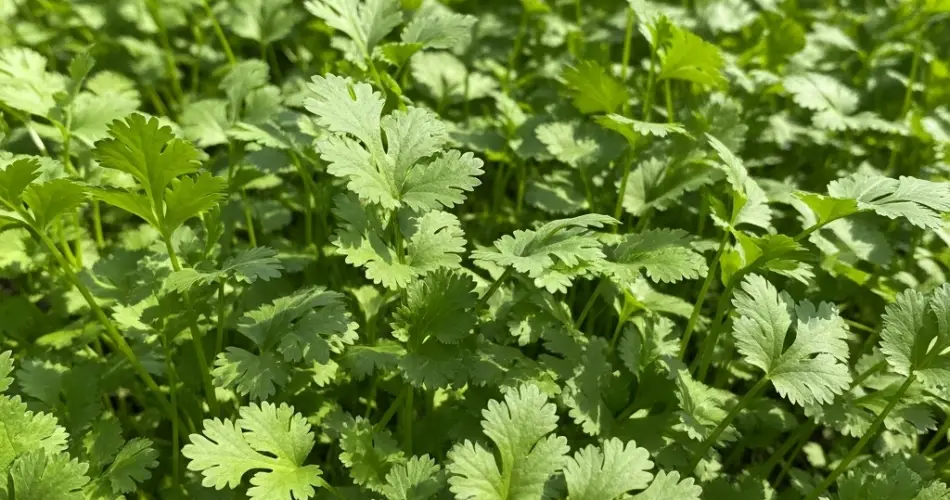Cilantro, also known as coriander, is a fast-growing and flavorful herb that’s a favorite in many kitchens around the world. But despite its popularity, cilantro can be surprisingly delicate, especially when grown in home gardens or containers. One of the most common issues growers face is drooping or wilting cilantro plants.
If your cilantro looks limp, wilted, or lifeless, don’t worry—most of the time, it can be revived with a few simple adjustments. Here’s how to identify the cause of drooping cilantro and the steps you can take to bring your plant back to life.
1. Check for Watering Issues
Overwatering or underwatering is the most common cause of drooping cilantro. Cilantro needs consistent moisture, but it doesn’t like to sit in waterlogged soil.
Signs of Overwatering:
-
Leaves look yellowish and limp
-
Soil feels soggy to the touch
-
Mold or a musty smell is present
Signs of Underwatering:
-
Leaves are dry, crispy, or curling at the edges
-
Soil is dry and pulling away from the sides of the pot
-
Entire plant looks limp and lifeless
Solution:
Check the soil moisture with your finger. If it feels dry an inch below the surface, water thoroughly. If it feels soggy, let the soil dry out before watering again. Ensure the pot has drainage holes to prevent root rot. Going forward, water when the top inch of soil feels dry—not before.
2. Adjust Light Exposure
Cilantro prefers cooler temperatures and partial to full sunlight, ideally about 4–6 hours of direct light per day. Too much intense sun, especially in hot climates, can stress the plant and cause drooping.
Solution:
If your cilantro is in a very sunny spot and showing signs of heat stress (wilting in the afternoon), try moving it to a location with morning sun and afternoon shade. Indoors, place it near a bright window, or use grow lights to provide balanced light exposure without overheating.
3. Assess Temperature Conditions
Cilantro is a cool-season herb and doesn’t like high heat. Temperatures above 85°F (29°C) can cause the plant to bolt (go to seed), wilt, or droop dramatically.
Solution:
Keep cilantro in a spot with temperatures between 50°F to 75°F (10°C to 24°C). In summer, move containers to a shaded patio or cool indoor area. Avoid placing it near heating vents, stoves, or other hot surfaces indoors.
4. Check for Crowding or Root Bound Conditions
Cilantro has a fine, shallow root system that can become crowded in small containers. When roots are bound or have outgrown the pot, water and nutrients can’t circulate efficiently, leading to drooping leaves.
Solution:
Gently remove the plant from its pot and inspect the roots. If they’re tightly wound in circles around the bottom, it’s time to repot. Choose a container that’s at least 6–8 inches deep and wide. Use fresh, well-draining potting soil, and water after repotting to help it settle.
5. Trim Damaged or Bolting Stems
Cilantro grows quickly and can bolt early if stressed, especially by heat or drought. When it bolts, it sends up tall flower stalks, and the lower leaves start drooping and losing flavor.
Solution:
Cut back any flower stalks or long, leggy stems. Harvest the outer leaves regularly to encourage fresh, leafy growth. Even if some stems are beyond saving, pruning them gives the rest of the plant a better chance of recovery.
6. Feed the Soil
Cilantro doesn’t need heavy fertilization, but a nutrient deficiency—especially in nitrogen—can cause weak, droopy growth.
Solution:
Use a diluted, balanced liquid fertilizer or compost tea every two to three weeks during the growing season. Be careful not to over-fertilize, as too much nitrogen can lead to excessive foliage with poor flavor and weak stems.
7. Improve Air Circulation
Poor airflow around the plant can create a humid microclimate, encouraging fungal diseases and causing leaves to sag.
Solution:
Ensure your cilantro has enough space around it. If you’re growing multiple herbs, don’t overcrowd the container. Indoors, consider using a small fan nearby to promote air circulation.
Final Thoughts
Cilantro may look delicate when it droops, but it’s surprisingly resilient when given the right care. Most drooping issues come down to watering mistakes, poor light conditions, or temperature stress. By identifying the cause early and making a few adjustments, your cilantro plant can perk back up and continue to thrive.
Whether you grow cilantro for cooking, tea, or garnishing, keeping it healthy starts with understanding its needs. With the right care, you’ll enjoy a steady supply of fresh, fragrant leaves straight from your own home garden.



